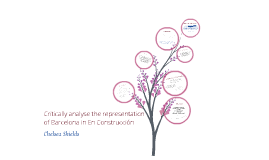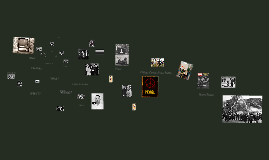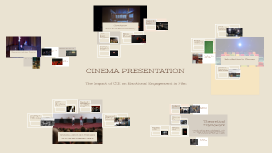cinema presentation
Transcript: - Introduction to director - Barcelona in En Construcción - Mortality - Cinematic Techniques - Conclusion - Bibliography and Filmography Traditionally film was seen as a uniquely privileged medium in its ability to adopt a voyeuristic position and observe without being observed. (Loxham, 2008:37) - Born 1960, Barcelona - One of Europe's most influential and innovative non-fiction filmmaker - Influences: The Lumiere Brothers, Howard Hawks, Yasujiro Ozu and John Ford - City Life, 1990 Tren de Sombras, 1997 En la Ciudad de Sylvia, 2007 Correspondences, 2011 The principal subject matter of En Construcción is daily life. The aim is to reveal what remains hidden by daily life, to make visible those secrets that move and reveal it as a great spectacle. (Cruz Carvajal 2002:60) Jose Luis Guerín - Different camera angles to create different effects - Out of past and into the present - eye level shot of a wall graffittied with eyes - Camera takes the role of an inhabitant to enable us to see and as much of the area as possible - Insight to the lives of the residents in the area - Closeness of the camera acts as a stand in for our physical presence - Visual and aural materials - Joiner and his son working together on construction site - Visual pleasure focusing on repeatedly drawn zig zag lines on stairwell - Intensifies the sensory experience for the viewer. 1) How is Barcelona represented through the area? - Black and white archive footage - Artist impressions and plans for new area - Replace the traditional image with something new - Trying to remove the past and create a new future Barcelona in En Construcción - Most popular and awarded work - Best Film and Special Prize of the Jury in 2001 - GOYA for the best documentary in 2002 - FIPRESCI - 5th best film of the decade 2000-2009 - Film a great representation of Barcelona - Offers two ways of representation, the first through the area and the second through residents - Guerín presents his documentary in a way which enables us to understand more 2) How is it represented through the residents? - Main characters Antonio, Juani and Ivan - All represent the history of Barcelona in their own way - Immigrant workers represent immigration in area - Densely populated, working class district in Barcelona - Centre/Barri Gotic reserved for young, wealthier people - 1992 Olympic Games prompted renovation in the area - Gentrification - Represented in two ways: 1) through the area, 2) through the residents Mortality Critically analyse the representation of Barcelona in En Construcción Chelsea Shields Cinematic Techniques - Cuesta, M. “Guerin en construcción”. Lateral 86 (2002):1-3. http://www.lateral-ed.es/revista/articulos/86guerin.html - Kinder, M. “Documenting the National and Its Subversion in a Democratic Spain”. Refiguring Spain. Ed. Marsha Kinder. Durham and London: Duke University Press, 1997 (65-98) - Loxham, A. ‘Objects of Memory in Contemporary Catalan Documentaries: Materiality and Mortality’, Senses of Cinema, 60, 2011. - Loxham, A.‘Barcelona under construction: The democratic potential of touch and vision in city cinema as depicted in En Construcción (2001)’, Studies in Hispanic Cinemas, 3, No.1 2006. - Ramon Resina, J. ‘The Construction of the Cinematic Image: En Construcción (José Luis Guerin, 2001)’, in Burning Darkness: Half a Century of Spanish Cinema, (New York: State University of New York, 2008), pp. 225-276 - En Construcción (José Luis Guerin, 2001) Introduction - Presence of mortality evident in scene where cemetery is uncovered - Construction work stopped - Archaeologists take over and try and preserve human remains - Men/women? Latin/Catalan? Ethnic slaughter? How old are they? BC/AC? Romanesque/Gothic? Arabian? - Documents & photographs are solid, material links to the past - Attempt to try and cover up old history - Effectively erase the history of the area - Similar to gentrification of the Barri Gotic, - Get rid of all the negative things of city Conclusion Bibliography/Filmography

















